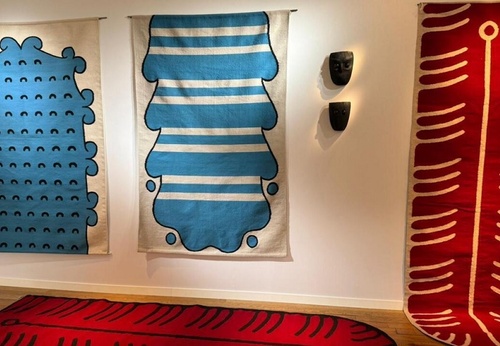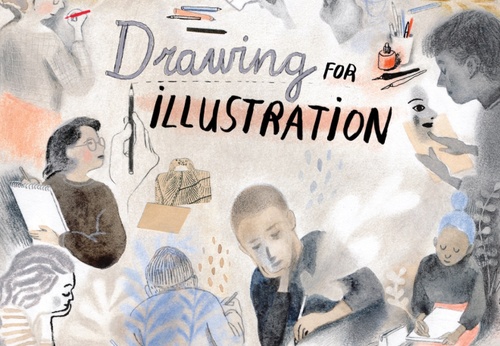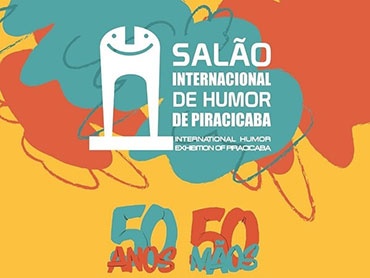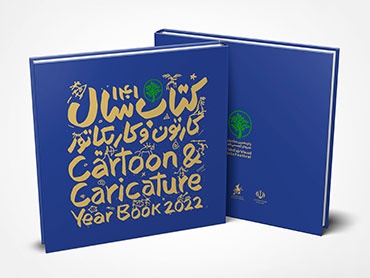
Indigenous Art: Characteristics and Types
Are you familiar with indigenous art? Have you ever worn headdresses in schools during Indigenous Peoples' Week in April? And did you know that this topic appears on the ENEM (Brazilian National High School Exam) and university entrance exams?
Since this theme is recurrent in the questions, Estratégia Vestibulares has prepared a summary with the main points about indigenous art: body painting, headdresses, ceramics, funerary urns, among other aspects. Check it out!
What is Indigenous Art Like?
Indigenous art is a set of sociocultural behaviors that generate objects and materials fundamental to the understanding of these peoples by the Westernized world. On the other hand, the plurality of native tribes and ethnicities allows us to say that there are diverse forms of indigenous art.
At the same time, it is important to note that the creation of art does not happen intentionally as in the Western European pattern of society. The so-called indigenous arts are constructed as part of the daily life, ritual, and reality of these peoples.
Thus, it is necessary to understand the difference between:
creating an object aiming at its beauty — as is known in the artistic field;
producing a handcrafted piece for ritualistic and symbolic purposes — as happens in indigenous reality.
Therefore, throughout this text, keep in mind that the concept of "art" is added by modern society, which admires native creations. But the entire process of forming indigenous works is a pure cultural manifestation and not a talent assembled for exhibition in museums and galleries.
Main Manifestations of Indigenous Art
Indigenous arts are diverse and plural, encompassing body painting, the creation of headdresses, the representation of funerary ceramics, and dance rituals, for example.
Body Painting
Whenever we address subjects such as indigenous culture or the celebration of Indigenous Peoples' Day (April 19th), the image of people with painted faces is revisited and marked as a symbol for native Brazilians.
It's important to know that body painting is a significant part of indigenous tribal identity.
In this context, it's important to note that each group defines a specific type of dyeing and shade to represent their skills, strengths, beliefs, hierarchies, among other aspects.
To achieve the coloring, the toning elements are extracted from native plants such as genipap, annatto, and tabatinga. The combination of colors and designs brings symbolic, ritualistic, and ethnic meaning to each body, according to historical and ancestral patterns established in each tribe.
Feather Art: Headdress
Indigenous feather art
Another item that is always remembered for indigenous culture is the headdress, constructed from feather art (with animal feathers). These ornaments are assembled with feathers of different colors, and besides being very beautiful and eye-catching, they bring different representations within the reality of each tribe.
Generally, headdresses are used in traditional fights or festive moments of the ethnic group in question. It also marks the hierarchical differences among the peoples of a territory: the most decorated and showy plumage marks the personality and authority of the cacique, the name given to the oldest chief of the tribe.
Ceramics and Funerary Urns
Indigenous ceramics are a type of symbolic art, because in addition to utensils for daily life, many of the elements were used to preserve ancestral memory. For this purpose, after the death of the most recognized tribal members, the bodies were kept in handcrafted ceramic urns.
The best-known tribe in this artistic branch are the Marajós, located in the Amazon region. Generally, women are responsible for collecting, preparing, molding, drying, and decorating the clay.
See, in the following photo, a type of indigenous ceramic construction, which is located in the Museum of Archaeology and Ethnology of the University of São Paulo:
Ceramics - Indigenous Art
Indigenous Dance
Indigenous dance is part of the daily life of most ethnic groups. These are coordinated body movements used in ritualistic, festive, funerary, and especially spiritual moments.
You've probably heard of the famous "rain dance." Although somewhat commonplace, this term demonstrates that dances have objectives, whether they are: entering adulthood, asking for or giving thanks for harvests, expelling bad energies, and other purposes.
Solved questions about indigenous art
To test your knowledge about indigenous artistic culture, answer the question below and check the solution proposed by Estratégia Vestibulares.
ENEM 2009
Dance is important for the indigenous people to prepare their bodies and throats, and it signifies energy for the body, which becomes robust. In the village, for physical preparation, we dance from five in the morning until six in the afternoon; the whole day is spent dancing when the godparents plan the adolescents' dances. The godfather is like a teacher, a physical trainer for the adolescents. For example, the godfather dreams of a particular song and plans for everyone to sing it. All types of dance come from the first Xavante people: Wamarĩdzadadzeiwawẽ, Butséwawẽ, Tseretomodzatsewawẽ, who discovered through wisdom how the Xavante culture would be. This culture, this celebration, still exists today. When an adolescent gets their ear pierced, it is mandatory for them to dance all night; they have to wake up at midnight to dance and sing; it's obligatory. They call each other with a special cry.
WÉRÉ’ É TSI’RÓBÓ, E. The dance and song - celebration of Xavante existence. VIS-Journal of the Postgraduate Program in Art at UnB. V. 5, n. 2, Dec. 2006.
Based on the information about Xavante dance, it can be concluded that the value of artistic diversity and cultural tradition presented originates from:
a) the individual initiative of the indigenous people to practice dance and song.
b) the excellent physical condition presented by the Xavante people.
c) the multiculturalism present in their scenic manifestation.
d) the lack of planning in the aesthetics of the dance, characterized by its originality.
e) an identity between ancestral gestures and the novelty of the songs to be sung.
As the text of the question points out, ancestry is a relevant factor for Xavante dance: “All types of dance come from the first Xavante people […] This culture, this celebration, exists to this day.” Furthermore, this artistic expression takes place in groups, in a ritualistic and orderly manner. Given these statements, the only acceptable alternative is letter E, which deals with ancestry and the songs mentioned in the passage.
Learn more about the arts with Estratégia Vestibulares!
To learn about the different types of art that have existed throughout history and their temporal markers, follow the Estratégia Vestibulares Blog!
Source

- November 18, 2025
Silenced World

- November 18, 2025
Visual Arts: History, Languages, and Cultural Relevance

- November 18, 2025
Indigenous Art: Characteristics and Types


- November 18, 2025
Drawing for Illustration by Martin Salisbury

- November 18, 2025
Carlos Puentes - Brazil

- November 17, 2025
Cuba | Complete Rondreis

- November 17, 2025
What are the types of AI?

- November 17, 2025
"Painting in Mexico Today Is More Alive Than It Was 15 Years Ago"

- November 18, 2025
Visual Arts: History, Languages, and Cu…

- November 18, 2025
Indigenous Art: Characteristics and Typ…

- November 17, 2025
What are the types of AI?

- November 16, 2025
The Importance of Aesthetic Experience …

- November 16, 2025
Art as a Mirror of Culture: Between Tra…

- November 15, 2025
The Influence of Artificial Intelligenc…

- November 15, 2025
The Evolution of Digital Art in the 21s…

- November 13, 2025
Urban Art in Latin America: A Visual Re…

- November 13, 2025
Urban Art in Latin America

- November 12, 2025
The Art of Photography: Capturing the E…

- November 11, 2025
The Power of Visual Arts

- November 09, 2025
Contemporary Art and Its Diverse Forms …

- November 08, 2025
Graffiti: From the Street to the Galler…

- November 08, 2025
Street Art in Latin America

- November 05, 2025
Art as Bridges: Creativity and Identity…

- November 04, 2025
Mexican Painters Who Left Their Mark on…

- November 03, 2025
Art and Identity in Latin America

- November 02, 2025
The horror and hope of Gaza's children …

- November 01, 2025
The Role of Artificial Intelligence in …

- October 30, 2025
Artificial Intelligence and Its Applica…

- August 29, 2023
The history of Bolivian art

- February 19, 2024
Analysis and meaning of Van Gogh's Star…

- January 28, 2024
Culture and Art in Argentina

- September 25, 2023
What is the importance of art in human …

- September 23, 2023
What is paint?

- August 10, 2023
14 questions and answers about the art …

- August 23, 2023
The 11 types of art and their meanings

- August 30, 2023
First artistic manifestations

- September 23, 2023
Painting characteristics

- January 12, 2024
10 most beautiful statues and sculpture…

- September 23, 2023
History of painting

- March 26, 2024
The importance of technology in art1

- March 26, 2024
Cultural identity and its impact on art…

- August 16, 2023
The 15 greatest painters in art history

- April 06, 2024
History of visual arts in Ecuador

- April 02, 2024
History visual arts in Brazil

- October 18, 2023
History of sculpture

- August 13, 2023
9 Latino painters and their great contr…

- August 27, 2023
The history of art Mexico

- January 31, 2024
Examples of Street Art – Urban Art

- February 19, 2024
Analysis and meaning of Van Gogh's Star…

- August 13, 2023
9 Latino painters and their great contr…

- August 23, 2023
The 11 types of art and their meanings

- August 10, 2023
14 questions and answers about the art …

- August 29, 2023
The history of Bolivian art

- August 27, 2023
15 main works of Van Gogh

- January 28, 2024
Culture and Art in Argentina

- November 06, 2023
5 Latin American artists and their works

- September 23, 2023
Painting characteristics

- September 23, 2023
What is paint?

- September 25, 2023
What is the importance of art in human …

- August 30, 2023
First artistic manifestations

- March 26, 2024
Cultural identity and its impact on art…

- December 18, 2023
10 iconic works by Oscar Niemeyer, geni…

- January 20, 2024
What is the relationship between art an…

- January 12, 2024
10 most beautiful statues and sculpture…

- October 30, 2023
Characteristics of Contemporary Art

- August 24, 2023
The most famous image of Ernesto "Che" …

- August 22, 2023
What are Plastic Arts?

- May 26, 2024


